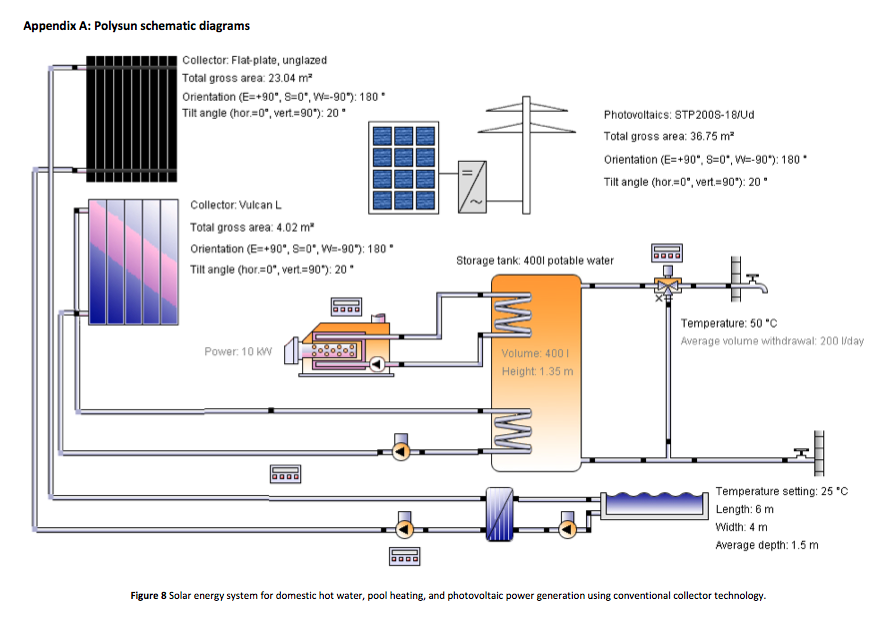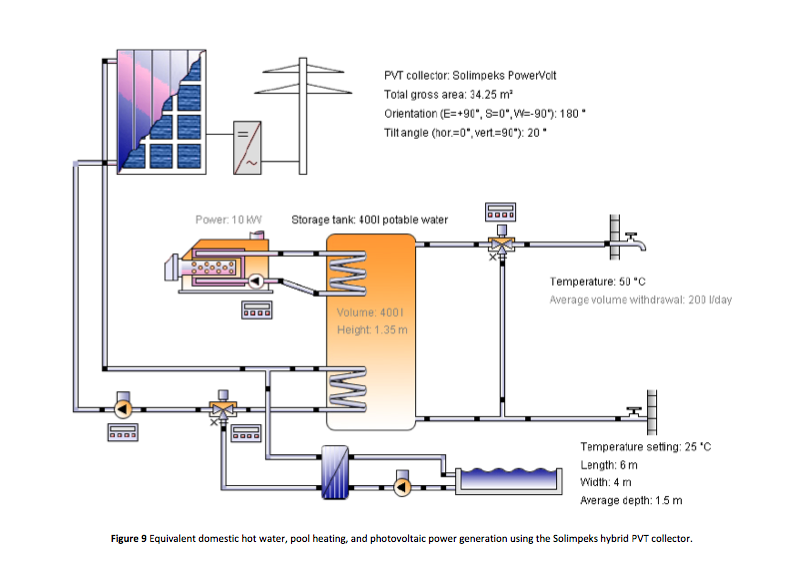Hybrid solar PV-Thermal module developer Solimpeks has released 3 detailed desktop studies from its engineering team on the advantages of PV-T technology. In instances where businesses or homes have water or space heating requirements (pre heat, showers, pools etc), want to save money with solar but have limited roof space, the case studies show that PV-T technology could be the most cost-effective choice.
The popularity of solar PV technology has grown phenomenally in Australia in recent years, with now well over 1 million systems having been installed nationally. The number of businesses and homes with solar hot water systems has similarly seen rapid expansion throughout the country, albeit not as dramatically as with solar PV. Although sometimes choosing both, most people, when mulling going solar, will make a choice between one technology or the other.
Solar hot water is usually a good choice for those who own pools and want to keep them heated without running up their power bills. Solar PV is seen as more versatile; although slightly less efficient in doing so than a solar hot water system, solar PV can also contribute to reducing water heating & cooling bills, provided the boiler in question is an electric one.
PV-T technology, meanwhile, combines the two and in doing so turns one of the inherent disadvantages of PV – the fact that PV panel efficiency decreases as panels heat up – into an advantage. Water is heated using the excess heat that is produced by the photovoltaic portion of the PV-T modules as the sun shines on them. As the heated water is drawn away and stored elsewhere, the overall temperature of the module is kept cooler than if it were solar PV alone. Additionally, there is the benefit of saved space.
The question that Solimpeks has endeavoured to answer with its case studies is: In which situations does it make more sense to opt for solar PV-T technology as opposed to solar PV, solar hot water or some combination of the two? Their case studies examine 3 situations: 1) A home with a heated pool and standard electricity needs, 2) a 100-person aged care facility, and 3) a commercial facility with an indoor heated pool. All case studies were modelled using a commercially available software package called Polysun.
Each case study finds that, while solar hot water & solar PV technologies can be individually or jointly dispatched to meet the energy demand of the building in question, PV-T is consistently the best choice where 1) roof space is limited and 2) there is a significant water heating load.
Case study 1 (pdf), for example, finds that a family dwelling located in Brisbane could produce roughly as much thermal and electric power using a PV-T system as with a solar hot water system + solar PV system combo. The big difference, however, is that the latter system would take up significantly more roof space (around 64 square meters) than a system using Hybrid modules (about 34 square meters). For a home with enough roof space to accommodate the double system, in the end it would come down to choosing the more cost-effective system. For a home without the space, the PV-T system would be the obvious choice. Case studies 2 and 3 (available for download here and here) come to similar conclusions for their respective situations.
 Solar PV plus solar hot water system technical layout (Click to Enlarge. Image via Solimpeks.)
Solar PV plus solar hot water system technical layout (Click to Enlarge. Image via Solimpeks.)
 Solar PVT system technical layout (Click to enlarge. Image via Solimpeks.)
Solar PVT system technical layout (Click to enlarge. Image via Solimpeks.)
The conclusion to take away is that PV-T technology is certainly an option to keep in mind for anyone who is considering going solar, especially those who have water heating needs but limited roof area on which to mount a system. Most households and businesses are aware of the versatility that solar PV system offers (electricity can be used to power nearly anything). Solimpeks, as the premier provider of this Hybrid technology in Australia, is working hard to make sure that people know that they can have solar hot water as well – and from the same units.
© 2014 Solar Choice Pty Ltd